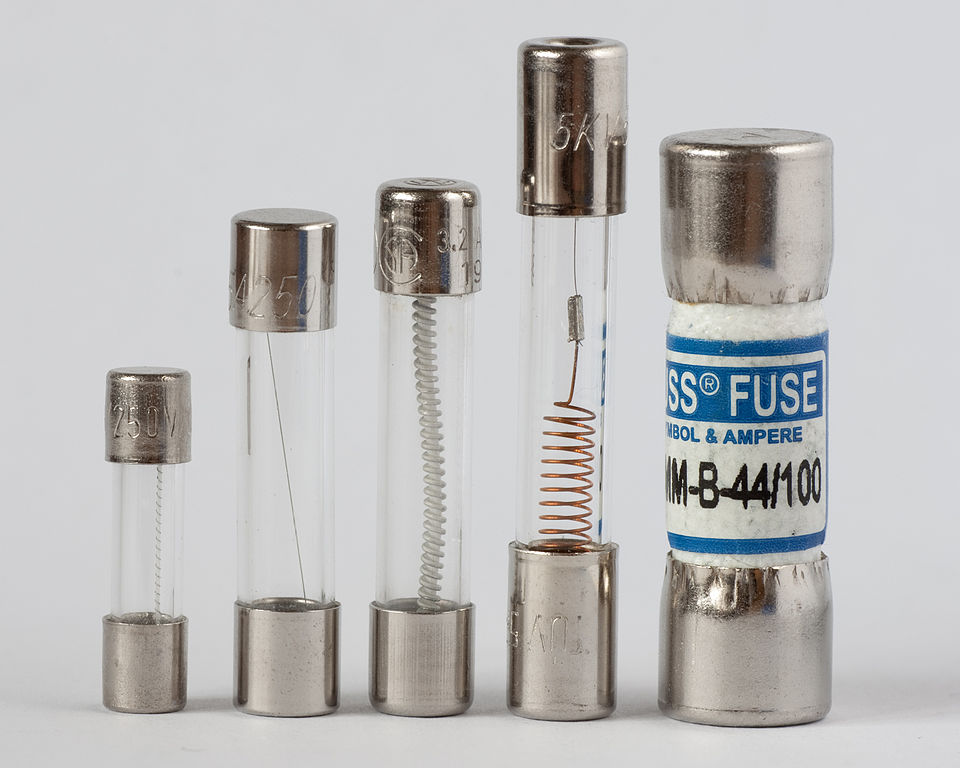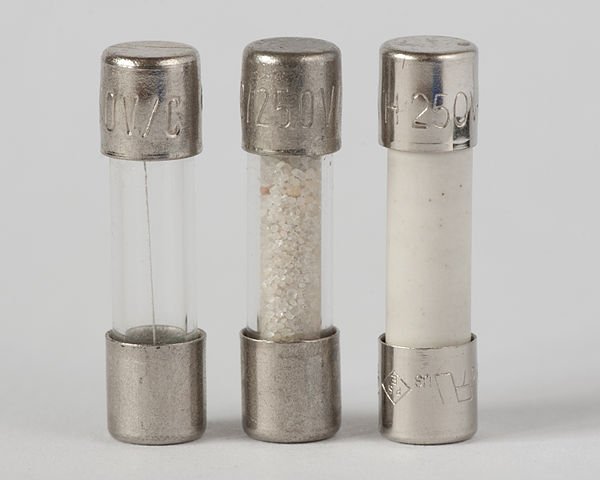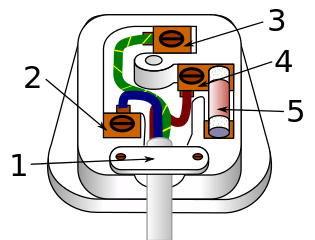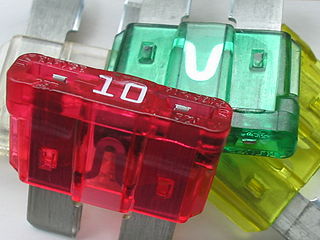The Electrical Protective Devices: The Fuse (Part 1)
Travelling one day after bouncing over an unusually large patch of a pothole the car spluttered to a halt. The vehicle was in super good condition but whatever we did to make it start did not yield any result. The nearest town is twenty minutes away, and it was getting late. The bonnet got opened, and every one turned into a mechanic and started fiddling with things. Meanwhile, a middle-aged man walking by asked us what the problem was, we explained. He said we should pay him an equivalent of $20 in our local currency to have it fixed.

[Wikipedia]Source: Types of cartridge fuses
We agreed, he demanded to be paid first. Again, we said yes. He quietly walked to the car's bonnet, lifted it, reached inside and hit a box and told us to try starting the car. We were sceptical, but we did give it a go. The car came to life. The man smiled and was about to walk away when we called him back and asked him what he just did. He said it appeared our fuse shook loose when we bounced over the pothole. A fuse was the culprit!
)
Fig 1: A fusebox of a car showing different blade fuses of various rating
Such a tinny little devil kept us stranded for over an hour. Welcome to the world of fuses and what they could do.
What is a fuse?
A fuse is simply an electrical protection device that is used to interrupt or remove power from damaging a sensitive part of an electrical system during either a short circuit or an overload.
A short circuit is simply the unintentional or unwanted diversion in path of an electric current by a low resistance. For instance when two current-carrying conducors touch, a short circuit results.

Gif: A tree branch causes a shortcircuit between two power lines
When this happens, a substantial flow of current capable of damaging the system flows and wires overheat.
Parts of a Fuse
Every electric would contain at least two of the following part.
- A fuse element: The fuse element is the conductor (wire) inside every fuse which determines the rating of the fuse. The bigger its diameter, the higher the current capacity of the fuses. For instance, the first glass fuse in Fig A below is apparently of a lower rating ( probably between 1A to 13A) compared to Fig B's bigger amperage (30A) rating. That is easy to see judging by the sizes of the fuse element. The low voltage fuse element is usually made from zinc, silver, aluminium, copper, and sometimes other alloys which has a low melting point that carries current under normal operation but melts when there is a fault current.
 |  |
A [Wikipedia]Source: Diffent type of Fuse | B [Wikipedia]Source: 30A rewirable fuse
2. The Housing: This is simply the holder of the element. In Fig A above, you could see the first 5x20mm fuse on the far left is made of glass, the one on far right is made of ceramic which is the same material the 30A fuse in Fig B is made of.
3. An arc-quenching material: This is material that quickly douses the arcs or little sparks that fly around as the fuse element breaks. This particular part of the fuse is dependent on the fuse type. Going back to Fig A, you will notice that the first fuse on far left has nothing inside the glass, but the fuse on the middle has same glass housing but with sand in it.
Current limiting fuses contain a granular filler, usually high purity quartz sand of defined grain size and packaging density. The specific grain size distribution provides room to expand for the vapours and gases produced by the arc and offers a large surface for efficient cooling. The filler does melt under the influence of high arc temperatures, absorbing an enormous amount of energy and extinguishing the arc well before current zero. Fused quartz and metal form a non-conductive fulgurite body that prevents re-striking of the arc. Source
Principle of operation
A fuse is an electric protection device as I previously mentioned. But how do they work?
Electricity could be used to heat up things in the case of the pressing iron, the electric cooker, the electric filament bulb which glows as the element is heated up, etc. It is this electrical property of heating things up that the fuse relies on.
When under a normal operating condition, the fuse element could handle the heat produced as current flows through it. There is an equilibrium between the heat dissipation and heat production under normal condition.
But if an overcurrent or fault current is resulting from a short circuit or fault in the electrical system, this equilibrium is no longer applicable. The heat production would be way higher than its dissipation leading to a rapid high temperature and eventual melting of the fuse element thereby interrupting electricity. The supply now disconnects from the load.
The load is now safe from this fault in the system.
Types of Fuses

Fig 2: 13A Fuse Plug
If you live in either UK or Nigeria, you would be very conversant with this 13A fuse plug. The part numbered 5 is the often used cylindrical fuse that comes in either glass or ceramic housing.
That type of fuse is a typical example of a low voltage alternating current (AC) fuse.
There are many types of fuse, and they include:
- Low Voltage Fuse: These are used in voltages that are lower than 1000 volts.
- High voltage AC fuse: It is usually applied to high voltage electric use such as in transmission. It handles voltages from 1000V and above.

Fig 3: Automobile blade fuse
3. Classification by type of enclosure and architecture: Here we have fuses such as cartridge fuses such as the 13A fuse in Fig A. Rewirable fuse such as the fuse in Fig B which one can easily replace when it melts.
There is the High Rupturing Fuses which is used in an area of high current application. Example include the blade type fuses used in automobiles such as the type that got us stranded.
4. DC fuses
DC fuses are for direct current (DC) application. The only noticeable difference is there is more space between the electrodes as compared to the ac fuses. This is because DC has a constant value( it does not alternate as alternating current), so a higher arc is always a possibility. This usually makes for a bigger size DC fuse of the same rating as an AC fuse.
Conclusion
Fuses are an integral part of the electrical protection system. It is always advisable to use the appropriately rated fuses at every one point. If you want to replace a 13A fuse, the same 13A rated fuse should be used as a replacement. Using a higher rated fuse, say a 15A fuse may likely cause the inability of the fuse to interrupt a fault current leading to damage to the system it was supposed to protect.
It is better to under fuse ( put a lower rated fuse) than to over fuse (put a higher rated fuse). When you under fuse, it would only lead to more replacements as the fuse would fail under normal working condition.
Always stay safe and follow every protocol in regards to electrical safety.
Thanks a lot.
Image Credits
[Fig 1]Flickr Creative Commons: A Fusebox of a Car
[Gif]Giphy.com
[Fig 2]Wikipedia Creative Commons:13 Amp Fuse Plug
[Fig 3]Wikipedia Creative Commons:An automobile blade fuse
References
If you write STEM (Science, Technology, Engineering, and Mathematics) related posts, consider joining #steemSTEM on steemit chat or discord here. If you are from Nigeria, you may want to include the #stemng tag in your post. You can visit this blog by @stemng for more details. You can also check this blog post by @steemstem here and this guidelines here for help on how to be a member of @steemstem.

Nice one again @greenrun it's nice to read to read such a wonderful article ones again in your blog. Fuses are actually one of the place value on most electrical components and without the fuse the components wouldn't work and if at all it does then it would be wrecked since nothing would be interrupting the excessive current flow.
Well written reply. Thank you for joining the conversation.
Fuse is small thou but without a fuse a whole system cannot work......
There was one day I worked on an inverter ,I wasn't able to identify the polarity to the battery... What I had was soft noise Wich makes D inverter stops working, could u believe it is just A BLOWN FUSE D system stopped working....
Fuse is very essential in d field of engineering as a whole
Nice post, will love to see n read through your part 2
Great info on fuse 👍👍👍
This shows alot of enlightenment..
Welldone
Nice post.I respect you very much because you contribute to steemit.I will do activities like you.I would like to extend the steemit.
dammm i feel like an electrical engineer today ; )
Ain't you one? :)
I am studying computer engineering and I had a hardware course called DC analysis. I was so tough. I always appreciate those who share information. Thank you for sharing this.
Thank you too.
A fuse no matter how small is capable of causing so much Disruption and hence must be carefully fixed.
Thanks for educating us.
Thank you too for reading and dropping a comment.
Thank you for the post. Always loaded with facts for our delight. The fuse seem to be to electrical appliances as the live is to the body.
That's very correct. Thanks.
I love fuses for their protective nature to appliance even though at times it could be annoying when there there us no nearby place to get any replacement.. I remember we complete the circuit with a thin wire. It does the job for a while even though its not safe...its an interesting topic sir. I am definitely following this even though i am currently writing exams.
I've done that wire thing, I usually use less strands of wire than is required as an interim emergency measure. Thanks a lot.
Quite interesting... The thrill of having to fix it in emergency times.. Its an interesting topic i love it.
Thank you